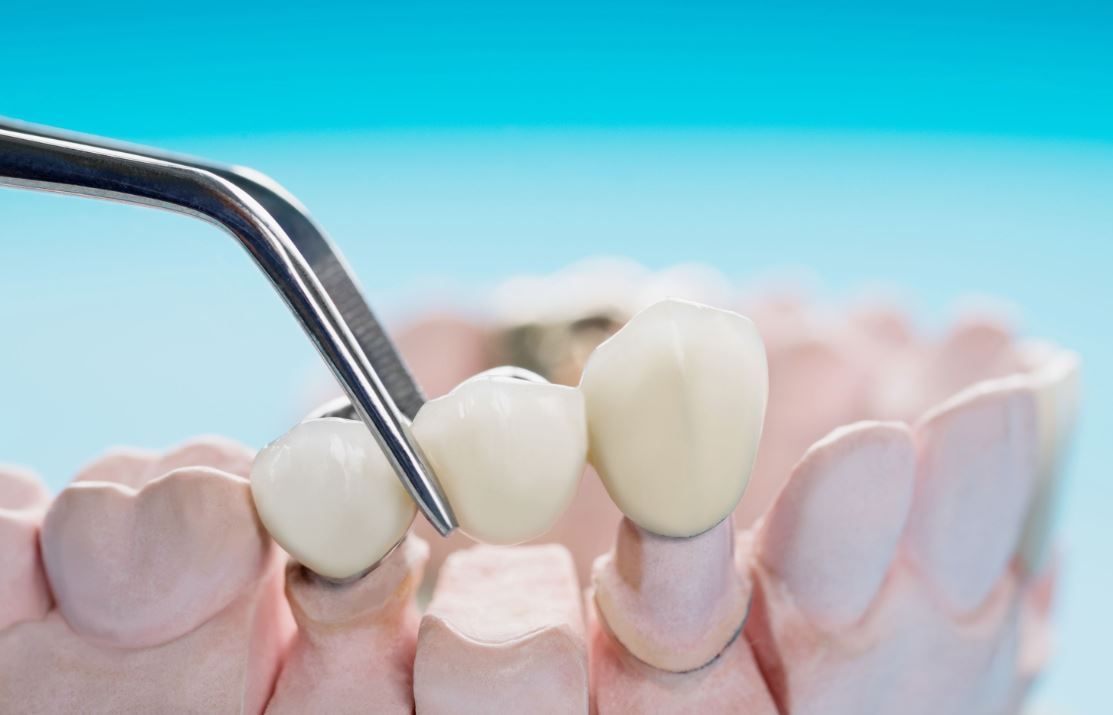
Dental bridges are a common and effective solution for replacing missing teeth, whether lost due to decay, injury, or other dental issues. As the name suggests, a dental bridge near me literally “bridges” the gap left by a missing tooth or teeth. The structure of a dental bridge relies on the teeth adjacent to the gap, which act as anchors, supporting the prosthetic tooth or teeth that fill the space. Once installed, dental bridges not only restore the functionality of your teeth but also maintain a natural appearance.
Assessing Candidacy for a Dental Bridge
Before recommending a dental bridge, your dentist will conduct a thorough examination of your oral health to determine if this restoration is suitable for you. The location of the missing tooth, the condition of the adjacent teeth, and the overall health of your mouth are key factors in this decision. Your dentist will evaluate the strength of the potential anchor teeth, ensuring they can support a dental bridge. Additionally, dental x-rays or a CBCT scan may be necessary to assess the underlying bone structure and identify any potential issues.
Types of Dental Bridges
Once you are deemed a good candidate for a dental bridge, the next step is to determine which type of bridge is most appropriate for your specific needs. There are four main types of dental bridges, each offering unique benefits and considerations depending on the individual case. Below, we’ll explore these four options:
1. Traditional Dental Bridge
The traditional dental bridge is the most commonly used type and the one many people are likely familiar with. This bridge consists of a prosthetic tooth (or teeth) held in place by dental crowns on the adjacent teeth. The crowns serve as anchor points, while the prosthetic tooth “bridges” the gap.
Benefits:
-
Strength: Traditional bridges are known for their durability and ability to withstand the forces of chewing.
-
Proven Track Record: This method has been used successfully for many years.
Drawbacks:
-
Modification of Adjacent Teeth: To place the crowns, the adjacent teeth must be filed down, permanently altering their structure.
2. Cantilever Dental Bridge
A cantilever dental bridge is similar to a traditional bridge but with one significant difference: it uses only one anchor tooth. This type of bridge is less common and is generally only recommended for areas at the front of the mouth where the forces of biting and chewing are less intense.
Benefits:
-
Conserves Tooth Structure: Only one adjacent tooth needs modification.
-
Cost and Time Efficiency: Fewer teeth involved means potentially lower costs and a simpler procedure.
Drawbacks:
-
Limited Use: Cantilever bridges are not suitable for the back of the mouth because the single anchor tooth may not be strong enough to support the bridge, leading to potential complications.
3. Maryland Bonded Bridge
The Maryland bonded bridge is a more conservative alternative to the traditional bridge. Instead of using crowns as anchors, this type of bridge uses a metal or porcelain framework bonded to the backs of the adjacent teeth. This design eliminates the need to modify the neighboring teeth.
Benefits:
-
Minimal Tooth Alteration: The adjacent teeth are not filed down, preserving their natural structure.
-
Cost-Effective: Maryland bridges are typically less expensive than traditional bridges due to the simpler procedure.
Drawbacks:
-
Strength and Durability: The bridge relies on the strength of the adhesive used, which may not be as strong as dental crowns.
-
Aesthetic Concerns: Metal frameworks can sometimes cause slight discoloration of the teeth they are bonded to.
4. Implant-Supported Bridge
The implant-supported bridge offers a modern solution for cases where multiple teeth are missing. Instead of relying on adjacent teeth, this type of bridge is anchored directly into the jawbone using dental implants. Implant-supported bridges are particularly beneficial when a large gap needs to be filled.
Benefits:
-
Exceptional Stability: Implants provide a secure foundation, mimicking the strength and stability of natural teeth.
-
Preservation of Adjacent Teeth: No need to alter nearby teeth, as the implants act as independent anchors.
-
Versatility: Can be used to replace multiple adjacent missing teeth.
Drawbacks:
-
Invasive Procedure: The placement of dental implants requires surgery, which involves a longer recovery period.
-
Higher Cost: Implant-supported bridges are generally more expensive due to the surgical component and the materials involved.
Choosing the Best Dental Bridge for Your Needs
The four types of dental bridges—traditional, cantilever, Maryland bonded, and implant-supported—offer a range of options to suit different dental needs and conditions. Traditional and Maryland bonded bridges are ideal when there are healthy teeth on either side of the gap, while cantilever bridges may be used when only one side of the gap has a tooth. Implant-supported bridges are best suited for cases with multiple missing teeth or when adjacent teeth are not suitable for modification.
Conclusion
Each type of dental bridge in Santa Clara, has its own set of advantages and disadvantages, and the best choice for you will depend on your specific dental situation, health considerations, and personal preferences. It’s important to consult with your dentist, who can provide expert advice on the most suitable option based on a comprehensive evaluation of your oral health.